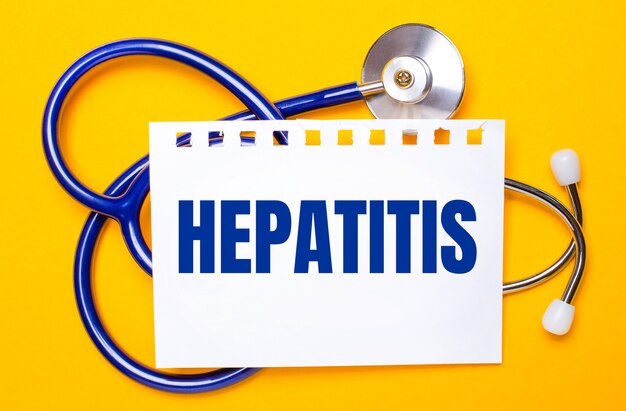Understanding How Hepatitis Is Transmitted: What You Need to Know
Imagine waking up one day feeling unusually fatigued, with a hint of nausea that just won't quit. You might brush it off as a bad day, but what if these are the early signs of hepatitis? While it’s common to associate this illness with liver inflammation, many remain unaware of how people get hepatitis and its impactful consequences. Let’s delve into the various pathways of transmission, uncover common myths, and explore preventive strategies to keep you and your loved ones safe.
The Basics of Hepatitis
Hepatitis is an inflammation of the liver, often caused by viral infections, but it can also result from toxins, alcohol, certain drugs, or autoimmune diseases. The most common viral types are Hepatitis A, B, C, D, and E, each differing primarily in their modes of transmission and impact on health.
Hepatitis A – The Contaminated Food Culprit
Transmission: Hepatitis A is primarily spread through ingesting food or water contaminated with the feces of an infected person. Poor hygiene and inadequate sanitation facilities often contribute to outbreaks. It’s more prevalent in countries with limited clean water access.
Prevention: The paramount method of prevention is maintaining good hygiene—regular hand washing is crucial. Vaccination against Hepatitis A is available and highly effective, particularly for travelers or those living in high-risk areas.
Hepatitis B – Blood and Body Fluids
Transmission: Hepatitis B is transmitted through exposure to infectious body fluids such as blood, semen, and vaginal secretions. Common ways include unprotected sex, sharing needles among drug users, and from mother to child during childbirth.
Important Note: It’s crucial to dispel the myth that casual contact, such as hugging or sharing food, spreads Hepatitis B. It does not.
Prevention: Vaccination offers robust protection against Hepatitis B. Utilizing safe sex practices and ensuring sterile medical environments can also mitigate risk. For infants born to infected mothers, immediate vaccination and immunoglobulin therapy significantly reduce transmission risks.
Hepatitis C – The Silent Spreader
Transmission: Hepatitis C spreads predominantly through blood-to-blood contact. Needle sharing among intravenous drug users is a primary cause. It can also spread through inadequate sterilization in healthcare settings and, less commonly, through sexual contact.
Prevention: Avoiding direct exposure to infected blood is key. This includes not sharing needles or personal items that could be contaminated with blood, such as razors or toothbrushes. Currently, no vaccine exists for Hepatitis C, so education and harm reduction remain vital strategies.
Hepatitis D – The Companion Virus
Transmission: Hepatitis D is unique as it can only infect individuals already carrying the Hepatitis B virus. Transmission routes mirror those of Hepatitis B, primarily through blood and bodily fluids.
Prevention: The best way to prevent Hepatitis D is to prevent Hepatitis B infections through vaccination and safe practices as outlined previously.
Hepatitis E – A Water Woe
Transmission: Similar to Hepatitis A, Hepatitis E is predominantly spread through consuming contaminated water. It's most common in areas with poor sanitation.
Prevention: Improving water, sanitation, and hygiene (WASH) facilities in vulnerable regions is crucial. Although a vaccine exists, it is not widely available globally.
Beyond Viruses: Other Causes of Hepatitis
While viral infections are leading causes of hepatitis, other triggers include:
- Excessive Alcohol Consumption: Chronic alcohol intake can lead to alcoholic hepatitis. Over time, this increases the risk of cirrhosis and liver failure.
- Non-Alcoholic Fatty Liver Disease (NAFLD): Often linked to obesity, diabetes, and high cholesterol, NAFLD can progress to inflammation (non-alcoholic steatohepatitis, or NASH) and liver damage.
- Medications and Toxins: Certain drugs like acetaminophen (when overdosed) and exposure to industrial toxins can provoke liver inflammation.
- Autoimmune Hepatitis: A rare form where the body's immune system attacks liver cells, leading to chronic inflammation.
Recognizing Symptoms: When to Seek Help
Hepatitis often remains asymptomatic in its initial stages, which can delay diagnosis. However, early symptoms may include:
- Fatigue
- Loss of appetite
- Dark urine
- Abdominal pain
- Jaundice (yellowing of skin and eyes)
If you notice persistent symptoms or suspect exposure risk, consulting a healthcare provider is vital to obtain appropriate testing and management.
Real-Life Impacts and Misconceptions
Misunderstandings about hepatitis transmission can lead to stigma and social isolation for those affected. It’s crucial to:
- Communicate openly: Educate friends and family to dispel myths and reduce fear.
- Promote empathy and support: Embrace a compassionate approach to individuals coping with the diagnosis, emphasizing support over judgment.
Practical Prevention: Taking Control of Your Health
Safeguarding against hepatitis involves conscious choices and informed decisions:
- Vaccination: Ensure you're vaccinated against Hepatitis A and B, reviewing requirements for international travel or occupations with exposure risks.
- Hygiene and Safe Practices: Consistently practice good hygiene, safe sex, and sterile techniques, especially in healthcare or personal grooming environments.
- Lifestyle Choices: Moderating alcohol consumption and maintaining healthy weight and diet contribute to liver well-being.
The Road Forward: A Healthier Tomorrow
Understanding how hepatitis spreads and how to minimize risk empowers communities to take proactive measures. By staying informed, promoting public health education, and advocating for improved sanitation and vaccination programs, we move closer to a world where hepatitis transmission is substantially reduced.
Key Takeaways 📌
- Hepatitis A & E: Spread via contaminated food/water; maintain good hygiene.
- Hepatitis B & D: Spread through blood/body fluids; vaccination is crucial.
- Hepatitis C: Primarily blood-borne; practice safe needle use.
- Other Causes: Include excessive alcohol, certain drugs/toxins, autoimmune.
- Prevention: Vaccination (where available), hygiene, safe practices.
- Empathy: Educate to dispel myths and promote support.
Understanding hepatitis and its transmission fosters a proactive approach to personal and public health, encouraging informed decisions and supportive community environments. 🌟
